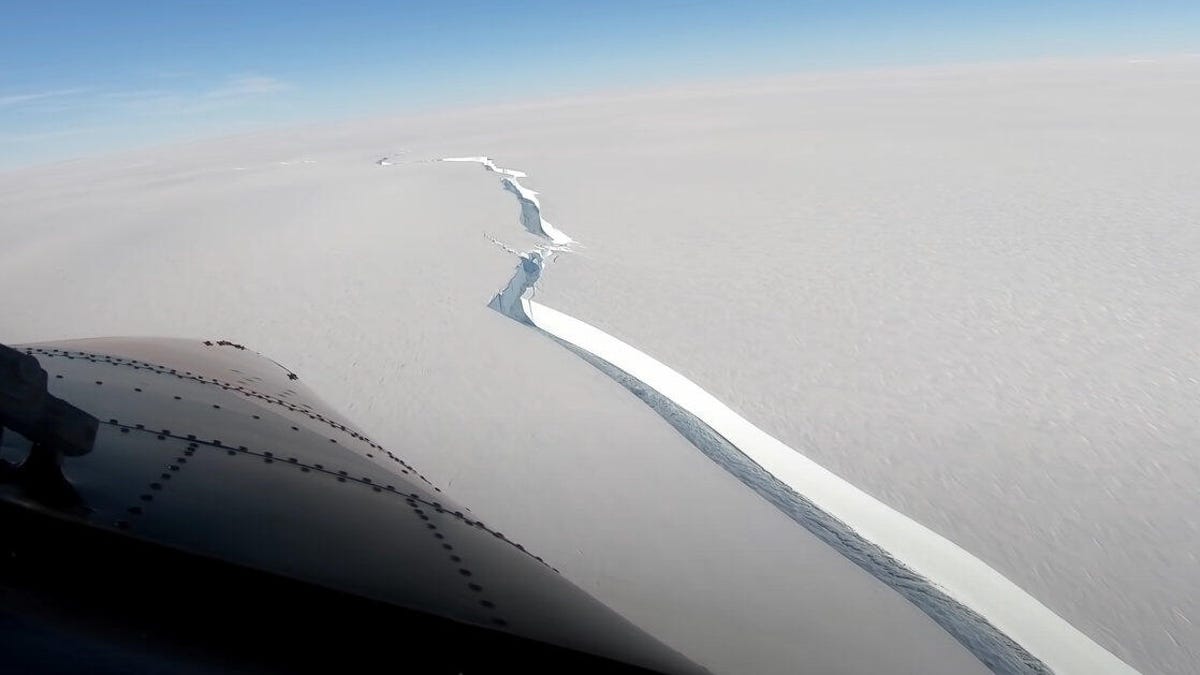See the epic Antarctic crack that spawned a Los Angeles-size iceberg
A knockout flyover video shows the dramatic chasm before the berg calved.
At last, a long-aticipated Antarctic event has happened. Scientists have been eyeing the Brunt Ice Shelf for years, just waiting for a giant iceberg to break free after multiple cracks spread across the shelf. A berg finally calved when an epic chasm named the North Rift spread enough to unleash an iceberg the size of a major metropolitan area.
The British Antarctic Survey research group announced the calving on Friday, estimating the new berg to be about 490 square miles (1,270 square kilometers) in size, which makes it about as big as the city of Los Angeles.
The rift broke through ice that was 490 feet (150 meters) thick, and it it did so at a breakneck speed. The chasm was finally wide enough on Feb. 26 to allow the iceberg to calve.
BAS shared a video taken in mid-February of an airplane flyover of the North Rift, a view that looks almost unreal. It shows the crack extending off into the distance as far as the eye can see.
BAS mapping specialist Laura Gerrish tweeted an animated satellite view of the new iceberg, which is expected to be named "A74." It shows images collected by the European Space Agency's Copernicus Sentinel-1 satellite.
Quick little animation to start off the working week, showing the last 3 #Sentinel1 images of new iceberg #A74 breaking off and moving away from the #BruntIceShelf. Dates and times in top-left corner. Images accessed from @polarview pic.twitter.com/gO5gt3hlJC
— Laura Gerrish (@laura_gerrish) March 1, 2021
Back in 2016, the BAS relocated its movable Halley Research Station away from a series of cracks that were forming along the ice shelf. The station was not in danger from the current iceberg and is currently closed with no personnel in residence.
Scientists will continue to monitor the ice shelf using GPS instruments and satellite images. The new iceberg may float away, but it also might stick close to the shelf.
"Our job now is to keep a close eye on the situation and assess any potential impact of the present calving on the remaining ice shelf," said Simon Garrad, BAS director of operations, in a statement. "We continuously review our contingency plans to ensure the safety of our staff, protect our research station, and maintain the delivery of the science we undertake at Halley."


